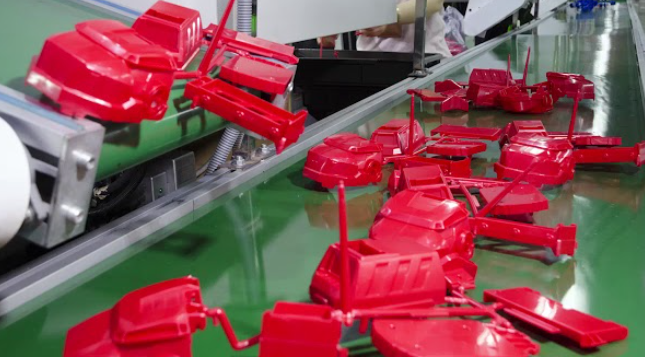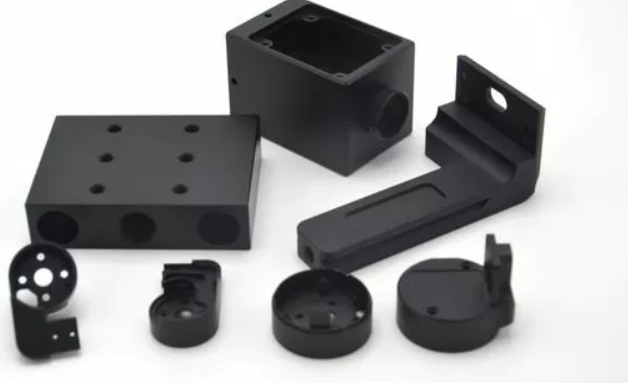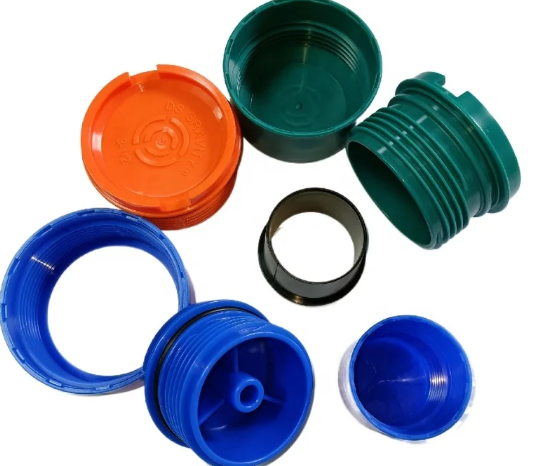The cost of injection molding per kg varies based on material, complexity, and production volume, typically ranging from $1 to $5.

Factors Affecting Injection Molding Costs
Injection molding, a versatile and widely used manufacturing process, incurs costs influenced by several key factors. Understanding these can help in managing budgets and improving efficiency.
Material Selection and Cost
- Type of Plastic: Different plastics, like ABS, polyethylene, or polycarbonate, vary in price. For instance, standard plastics like polyethylene are cheaper than engineering plastics like polycarbonate.
- Quality and Grade: High-grade materials improve product quality but increase costs. For example, medical-grade plastics are more expensive due to their higher purity and quality standards.
- Quantity: Buying in bulk can reduce the unit price of plastic. For instance, ordering 1000 kg might cost $5 per kg, whereas ordering 10,000 kg could reduce the cost to $4.50 per kg.
Machine Type and Operating Costs
- Injection Molding Machine Type: Hydraulic, electric, or hybrid machines have different costs. Electric machines, known for precision and energy efficiency, typically have higher initial costs but lower operating costs.
- Power Consumption: The power rating of machines affects electricity costs. A machine with a power rating of 15 kW, operating for 8 hours a day, can consume significant energy.
- Maintenance: Regular maintenance is crucial for machine longevity. The cost of maintenance varies based on the machine complexity and frequency of use.
Labor Costs and Efficiency
- Skilled Workforce: The cost of skilled labor for operating machinery and overseeing the production process. In some regions, this can be a significant portion of the total cost.
- Automation Level: Highly automated processes reduce labor costs but require a higher initial investment. For instance, robotic arms used in removing finished products can save manual labor but add to the initial setup cost.
- Production Speed: Faster machines can produce more units per hour, affecting labor efficiency. For example, a machine that produces 100 units per hour will need less labor per unit than a machine producing 50 units per hour.
Calculating Injection Molding Costs Per Kilogram
Determining the cost per kilogram in injection molding is crucial for budgeting and pricing strategies. This calculation involves various factors, including material, machine operation, and labor costs.
Methodology for Cost Calculation
- Material Cost Calculation: Calculate the total cost of materials used per kilogram. For instance, if ABS plastic costs $5 per kg and 2 kg is required per batch, the material cost per kg is $10.
- Machine Operating Cost: Include the machine’s hourly rate, power consumption, and maintenance. If a machine consumes 15 kW power and operates for 8 hours at an electricity rate of $0.10 per kWh, the daily power cost is $12.
- Labor Cost: Factor in the hourly wage of operators and the time taken for each batch. For a batch taking 1 hour with labor costing $20 per hour, the labor cost per batch is $20.
- Overhead Costs: Add overhead costs like factory rent, administrative expenses, and utilities. These costs are often calculated on a per batch or monthly basis and then broken down per kilogram.
- Total Cost Calculation: Combine all these costs to get the total cost per kg. For instance, if the total material, machine, and labor costs for a batch producing 10 kg of products is $100, the cost per kg is $10.
Case Studies and Examples
- Case Study 1: A company using polycarbonate, which costs $12 per kg, to produce 1000 kg of products monthly. Including machine and labor costs, the total cost per month is $15,000. The cost per kg is thus $15.
- Case Study 2: A high-efficiency electric injection molding machine producing 500 kg of products per day with lower energy costs. Despite a higher initial machine cost, the cost per kg is reduced due to lower electricity consumption and faster production speed.

Cost Optimization in Injection Molding
Optimizing costs in injection molding involves strategic decisions in material selection, machinery usage, and operational processes. Effective cost management not only reduces expenses but also enhances product quality and production efficiency.
Reducing Material Costs
- Bulk Purchasing: Buy materials in bulk to benefit from discounts. For example, purchasing 10,000 kg of ABS plastic might reduce the cost from $5 to $4.50 per kg.
- Material Substitution: Use cost-effective alternatives where possible. For instance, replacing polycarbonate with a less expensive but similarly effective plastic for non-critical parts.
- Recycling and Reusing: Implement a system for recycling scrap and defective products. This can significantly reduce material wastage and lower the net material costs.
- Optimizing Material Use: Design products to minimize material usage without compromising quality. For example, designing parts with thinner walls or hollow sections can reduce material consumption.
Enhancing Operational Efficiency
- Machine Efficiency: Use energy-efficient machines to reduce power costs. For example, electric injection molding machines, though more expensive initially, can save costs in the long run due to lower energy consumption.
- Preventive Maintenance: Regular maintenance of machines prevents costly breakdowns and downtime. For instance, scheduled maintenance every 6 months can prolong machine life and reduce unexpected repair costs.
- Automation: Implement automation in repetitive tasks. Robotic arms and automated quality checks can speed up production and reduce labor costs.
- Employee Training: Train employees to operate machines efficiently and manage production effectively. Skilled workers can optimize machine settings to speed up cycle times and reduce defects, thereby saving costs.
Impact of Design on Molding Costs
The design of a product significantly influences the costs involved in its injection molding process. From the complexity of the design to the efficiency of the mold, every aspect plays a crucial role in determining the overall expenditure.
Design Complexity and Mold Design
- Complex Shapes and Sizes: More intricate designs require complex molds, which are more expensive to manufacture. For example, a part with undercuts or overhangs needs advanced mold mechanisms like sliders or lifters, increasing the mold cost.
- Tolerances and Surface Finish: Tighter tolerances and finer surface finishes demand precision in mold making, leading to higher costs. Achieving a surface finish of Ra 0.2 microns, for instance, requires high-grade steel and precise machining.
- Number of Cavities: A mold with multiple cavities can produce more parts per cycle but costs more initially. A 16-cavity mold, for example, may cost twice as much as an 8-cavity mold but can double the production rate.
- Mold Material: The choice of mold material affects both cost and longevity. Hardened steel molds last longer but are more expensive compared to aluminum molds.
Design Modifications to Reduce Costs
- Simplifying Geometry: Reducing the complexity of the design can lower mold costs. For example, avoiding undercuts and minimizing curves can simplify the mold design.
- Uniform Wall Thickness: Designing parts with uniform wall thickness ensures even cooling and reduces the risk of defects, thereby saving on material and reducing waste.
- Integrating Parts: Combining multiple parts into a single design can reduce the number of molds required. This not only saves on mold costs but also simplifies the assembly process.
- Gate and Runner Optimization: Efficiently designing gates and runners in the mold can reduce material usage and cycle time. Optimizing the runner size and gate location can ensure better flow of plastic, improving quality and reducing waste.

Comparative Analysis
Comparing injection molding with other manufacturing processes highlights its unique advantages and limitations. This analysis helps in selecting the most suitable process for a specific application based on factors like cost, efficiency, and material.
Injection Molding vs. Other Manufacturing Processes
- Injection Molding vs. 3D Printing:
- Cost and Speed for Large Volumes: Injection molding is more cost-effective for large-scale production, with a faster production rate. For instance, producing 10,000 units might cost $0.50 per unit in injection molding but $1.00 per unit in 3D printing.
- Complexity and Customization: 3D printing excels in producing complex geometries and custom designs without the need for expensive molds.
- Material Options: Injection molding offers a wider range of materials, including high-strength plastics, whereas 3D printing is limited to materials compatible with the printing process.
- Setup Time and Cost: Injection molding requires significant setup time and cost for mold design, whereas 3D printing has almost no setup costs, making it ideal for prototyping.
- Injection Molding vs. CNC Machining:
- Material Wastage: CNC machining, which involves subtracting material, typically has more waste compared to the additive process of injection molding.
- Precision and Finish: CNC machining can achieve higher precision and surface finish without additional processing, whereas injection molded parts might require post-processing.
- Production Speed and Volume: Injection molding is faster and more suitable for high-volume production. CNC machining is slower and more cost-effective for small batches.
- Design Flexibility: While injection molding is limited by mold design, CNC machining offers greater flexibility in design changes.
- Injection Molding vs. Die Casting:
- Material Types: Die casting is predominantly used for metals, whereas injection molding is used for plastics.
- Tooling Cost and Lifespan: Die casting molds, typically made from steel, have a longer lifespan but are more expensive compared to injection molding molds.
- Part Complexity and Weight: Injection molding allows for lighter parts and is more adaptable to complex shapes without increasing costs significantly.
- Surface Finish and Tolerance: Die casting generally offers better surface finish and tighter tolerances directly out of the mold compared to injection molding.


